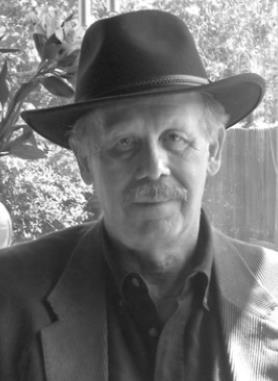At noon on Aug. 1, 1966, Allen Crum, the floor manager at the University Co-Op, looked out the window and witnessed several students dragging a limp teenager through the grass on the edge of the University of Texas campus.
The burly 40 year old Air Force veteran, a retired tail gunner, walked across Guadalupe Street to break up what he believed to be a fight. But as he drew closer to the circle of youths, he could see that the boy in the center was bleeding badly.
It was then that Crum heard the gunfire and snapped to the jarring fact that people in all directions were running for their lives. But he could not tell at that moment where the barrage of bullets was coming from.
In the sea of panic, Crum managed to keep his head. He shouted at curious employees standing in front of the store to go back inside and to keep everybody away from the window. Once that was done, he stopped traffic on Guadalupe and succeeded in clearing the busy street.
Realizing he could not safely return to The Co-Op, Crum ran to the nearest pay phone, on the ground floor of The Tower, to call his wife. Unable to reach her, he hung up and refocused his attention on the chaotic campus.
Exiting The Tower, Crum met the first Austin policeman on the scene. With his military style crew cut and open-collar white dress shirt, it was easy to mistake Crum for a detective, which Jerry Day and other officers apparently did.
Crum accompanied Day to the third floor of The Tower, where the officer leaned out a window in order to get a bead on the shooter atop the 307-foot structure. When that failed, the two retraced their steps to the first floor.
Encountering a DPS trooper named Cowan toting a pistol and a .30 caliber rifle. Crum asked to borrow the long gun, and the highway patrolman obliged. The trio was joined by two more local cops, Ramiro “Ray” Martinez and Houston McCoy, and the five men rode the elevator as far as it went -- the level below the observation deck.
When Martinez opened the door to the stairway connecting to the deck. Crum leaned over and asked him, “Are you going up?”
“Yes, I am,” was the firm reply.
“Well, you’re not going by yourself,” the older man said matter-of-factly. C r u m added, almost as an afterthought, “Well, you better deputize me,” making it clear for the first time he was not, in fact, a lawman.
Cautiously climbing the steps, Martinez and Crum passed the mass murderer’s earliest victims. (The very first were Charles Whitman’s wife and mother he killed that morning before driving to the UT campus with a trunk full of guns and ammunition.) They included a 16 year old boy and his aunt, both dead, and an older woman and a young male companion each seriously wounded.
At the head of stairs was the receptionist dead at her desk. The last door, the only access to the observation deck, was blocked by the dolly the sniper used to transport his heavy trunk. Martinez and Crum pushed the door wide open and took a couple of tentative steps onto to deck with McCoy and Day not far behind them.
The windswept rooftop was a square inside a square. The low wall on the edge had served as the sniper’s protected perch until ground fire from a swarm of students and hunters limited him to narrow drain spouts thereby reducing his field of vision. Inside the parapet was a second wall that hid Whitman from view.
Crum with his hand-me-down rifle and Martinez with his pistol went in opposite directions. Hearing what sounded like footsteps, the jumpy civilian squeezed the trigger of the old Remington hitting the inner wall.
The wild shot distracted the sniper, who was sitting with his back to the outer wall, just as Martinez rounded the corner and came face-to-face with the ex-Marine, who had killed 16 and wounded 31. A brief battle ensued with Whitman shooting over the officer’s head and Martinez emptying his revolver with no apparent effect.
An instant later, McCoy showed up with his shotgun and fired two blasts at the surprised sniper. Both lethal loads struck Whitman in the head killing him instantly.
Ninety-six minutes of terror were over at last.
The small army down below kept shooting putting the lives of those on top of The Tower in danger. At the policemen’s urging, Crum waved a white handkerchief to signal for everyone to cease firing.
Allen Crum may have survived the ordeal, but he was never the same. Six years later, he clocked out at an Austin defense and instead of going home drove to Las Vegas. His wife eventually joined him, but the civilian hero of that terrible day at the University of Texas never came back to the Lone Star State, not even for his son’s wedding.
David Crum did not mince words, when he spoke to the Texas Tribune in 2016. “That day I lost my father.”
Get your copy of “Murder Most Texan,” a collection of classic cases, at the reduced price of $20.00 by mailing a check to Bartee Haile, P.O. Box 130011, Spring, TX 77393.


